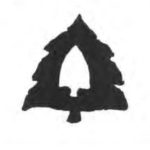the archaeological process
standard form of archaeological research
Research design: is crucial and fundamental in determining what are the research goals, types of methods and multi-disciplinary are included, and how to implement these throughout the entire archaeological process (field, laboratory, and curational) (Sutton and Arkush 13). The determined research design dictates the kind of methods used to collect specific type(s) of data. The research design should incorporate the following:
Background research: the process of assembling “what is already known about the project area. This information draws from history, archaeology, geology, soils,… environmental sciences, and other social and cultural background research” (Neumann et al. 61). This process places the “associated archaeological research into a broader context” (Neumann et al. 61).
Inventory (survey): the process of looking, recording, and providing a preliminary assessment of an archaeological site. Often associated with surface surveying of a potential area (Sutton and Arkush 14).
Field methods: are the specific methods that vary depending on the archaeological context and research questions. For example, archaeologist often used 6.3mm (1/4in) screen when excavating contact period sites and 3.2mm (1/8in) for precontract sites in a couple instances. This is because most contact period sites contain larger materials while the reverse is true for precontract sites (Sutton and Arkush 15).
Small-scale excavations: conducted to determine the presence, extent, cultural affiliation, content, age, integrity of site, and the research potential of a site (Sutton and Arkush 14).
Large-scale excavations: “designed to recover information, useful to answer specific questions generated in the research design” (Sutton and Arkush 14).
Processing the material: the processing of materials includes cleaning, bagging, labeling, organizing field notes and images, cataloging, developing a database, as well as performing analysis based on the research design questions(s) (Sutton and Arkush 28).
Reporting results: it is crucial that any scholarly conducted research be published and made available (depending upon the sensitivity of the site) to the greater academic and public community in a fashion that is testable, informative, and educational (Sutton and Arkush 19).
Curation: once the processing phase of cataloging and analyzing is completed the material must be stored. Curation (long-term storage of collections) is the process in which the archaeological material acquired from excavation and processing “is prepared for final transfer to… a repository in perpetuity [to] be made available for future use by scholars seeking to conduct comparative research” (Sutton and Arkush 31-32).
Work Cited
Neumann, Thomas W., Robert M. Sanford, and Karen G. Harry
2010 Cultural Resource Archaeology: An Introduction. 2nd ed. Altamira Press, Plymouth, UK.
Sutton, Mark Q. and Brooke S. Arkush
2014 Archaeological Laboratory Methods: An Introduction. 6th ed. Kendall Hunt Publishing Company, Dubuque, IA.

The
Maine
Archaeological
Society
Contact Information
The Maine Archaeological Society
P.O. Box 982
Augusta, Maine 04332-0982